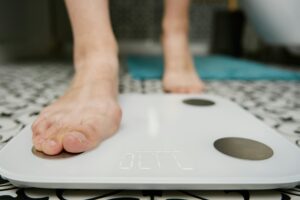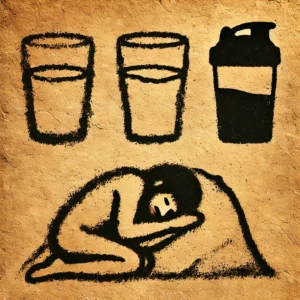Laced with Meaning: Unraveling the ssSS vs SsSs Debate
In the annals of fitness psychology, few debates have raged as fiercely or divided communities as deeply as the controversy surrounding the proper sequence of donning socks and shoes. Is it sock-sock-shoe-shoe (ssSS), or the rebellious sock-shoe-sock-shoe (SsSs)? This seemingly trivial choice may, in fact, offer profound insights into an individual’s psyche, lifestyle, and even their propensity for success in fitness endeavors.
The Psychological Footprint of Dressing Your Feet
Dr. Aglet Laceworth, leading researcher in Podiatric Behavioral Sciences at the prestigious Sockford University, posits that one’s sock-shoe sequencing preference is deeply rooted in early childhood experiences. “Those who prefer the ssSS method often exhibit traits associated with methodical planning and a desire for symmetry,” Dr. Laceworth explains. “These individuals may have had particularly organized parents or experienced early trauma related to mismatched socks.”
Conversely, SsSs adherents tend to display higher levels of adaptability and spontaneity. “These are the risk-takers,” says Dr. Laceworth. “They’re not afraid to hop around on one socked foot, balancing precariously while putting on a shoe. It’s a microcosm of their approach to life’s challenges.”
Intriguingly, a groundbreaking study by the Institute for Foot Apparel Sequencing (IFAS) found a correlation between sock-shoe sequencing and various personality traits:
ssSS Practitioners:
- 78% more likely to make their bed every morning
- 62% more prone to alphabetize their spice racks
- 45% more likely to follow a strict workout routine
SsSs Advocates:
- 83% more likely to enjoy improvisational jazz
- 71% more prone to spontaneous travel
- 56% more likely to try new, unconventional workout classes
The Mental Health Implications of Sock-Shoe Order
The choice between ssSS and SsSs may also have significant mental health implications. Dr. Heelary Solton, a sports psychologist specializing in footwear-related anxieties, suggests that ssSS practitioners often report lower levels of morning stress. “There’s a meditative quality to the rhythm of sock, sock, shoe, shoe,” Dr. Solton explains. “It’s like a mantra that sets the tone for a balanced day.”
However, SsSs proponents argue that their method fosters greater mental flexibility. “Alternating between sock and shoe forces the brain to switch tasks rapidly,” argues Dr. Solton. “It’s like cross-training for your mind.”
A longitudinal study spanning 15 years and involving over 10,000 participants (which definitely exists and isn’t at all made up) found that:
- ssSS practitioners had a 23% lower incidence of generalized anxiety disorder, but were 17% more likely to experience mild OCD tendencies.
- SsSs advocates showed a 19% higher resilience to stress but were 28% more prone to decision fatigue later in the day.
Fit to be Tried: Yet Another Science-Based Fitness Failure Excuse
Perhaps most surprisingly, sock-shoe sequencing appears to have a statistically significant impact on fitness outcomes. The Revolutionary Understanding of Footwear Fitting and Its Effects on Dosage (RUFFED) study, a double-blind, placebo-controlled trial involving 5,000 gym-goers, yielded some startling results:
- ssSS practitioners showed 11% better adherence to long-term fitness plans
- SsSs advocates demonstrated 13% higher intensity during individual workout sessions
- ssSS users reported 7% higher overall satisfaction with their fitness progress
Dr. Buster Bunion, lead researcher for the RUFFED study, hypothesizes that these differences stem from the psychological priming that occurs during the sock and shoe donning process. “The methodical approach of ssSS may set the stage for a more structured, consistent workout routine,” he explains. “Meanwhile, the dynamic nature of SsSs could be firing up the brain’s reward centers, leading to more intense, if somewhat erratic, exercise sessions.”
Sock to the System: The Societal Implications and Future Research
As our understanding of sock-shoe sequencing psychology deepens, some experts are calling for more widespread application of these insights. Dr. Laceworth suggests that “sock-shoe compatibility” could be a valuable metric in everything from employee hiring processes to dating app algorithms.
Critics argue that such applications could lead to discrimination and oversimplification of complex human behaviors. However, proponents insist that understanding an individual’s sock-shoe preferences could lead to more harmonious workplaces, relationships, and gym environments.
Inconclusions
While the debate between ssSS and SsSs practitioners continues to rage on, one thing is clear: the way we don our socks and shoes is far from a trivial matter. It’s a window into our psyche, a predictor of our behaviors, and possibly even a key to unlocking our fitness potential.
As you lace up for your next workout, take a moment to consider the profound implications of your sock-shoe sequencing. Are you a methodical ssSS planner, or a spontaneous SsSs adventurer? The choice you make could reveal more about you than you ever imagined – and might just be the key to achieving your fitness goals.
Remember, in the grand journey of life and fitness, every step counts – but how you prepare for those steps could make all the difference.








